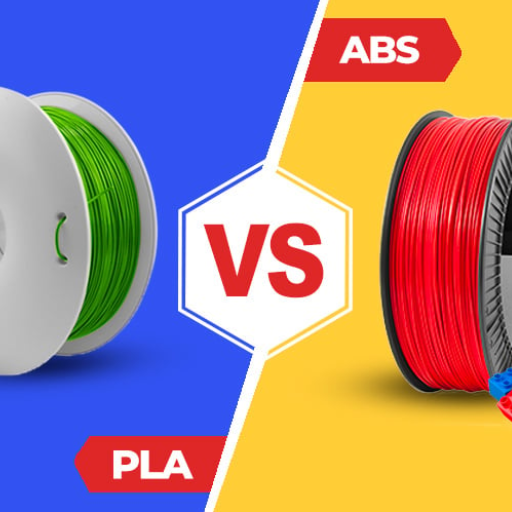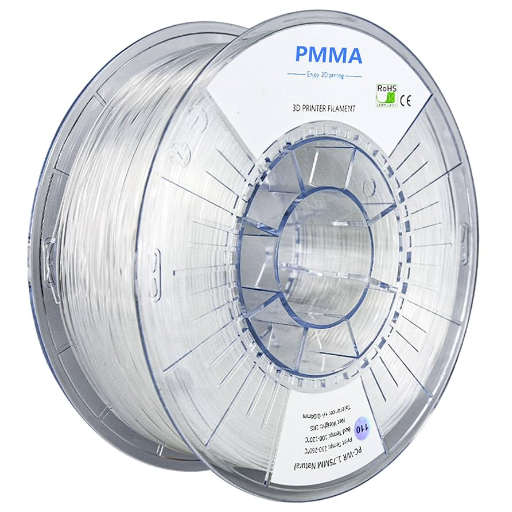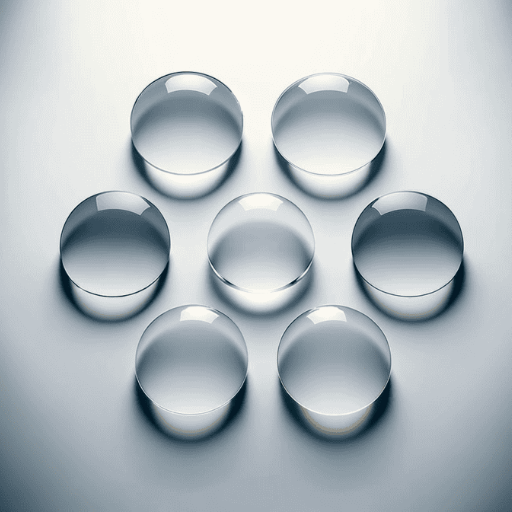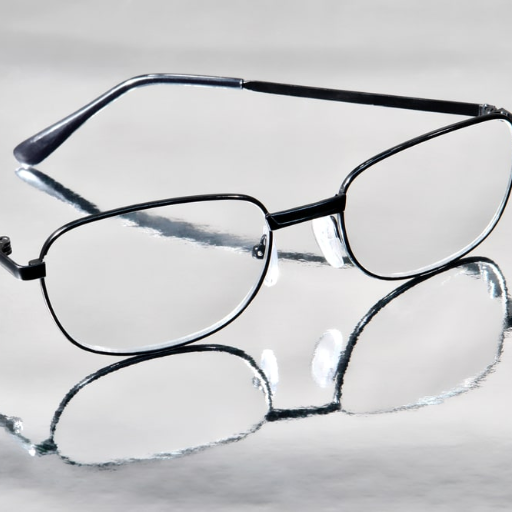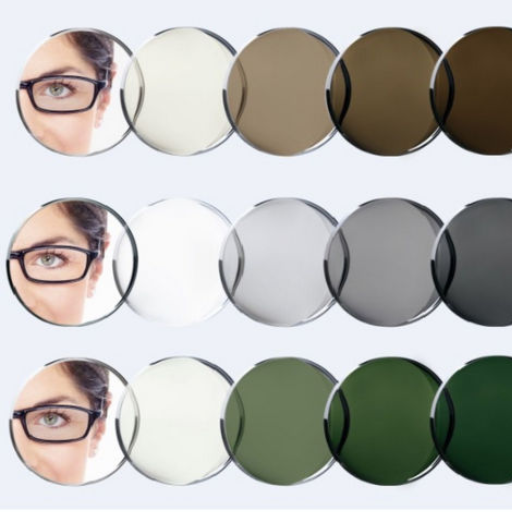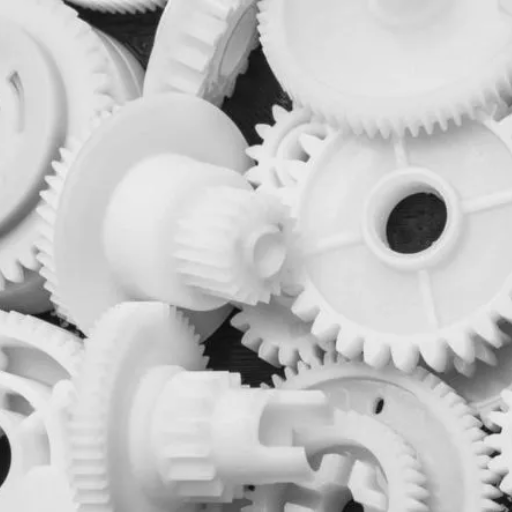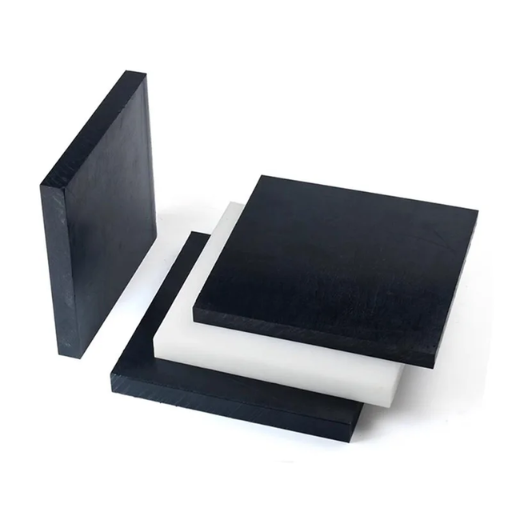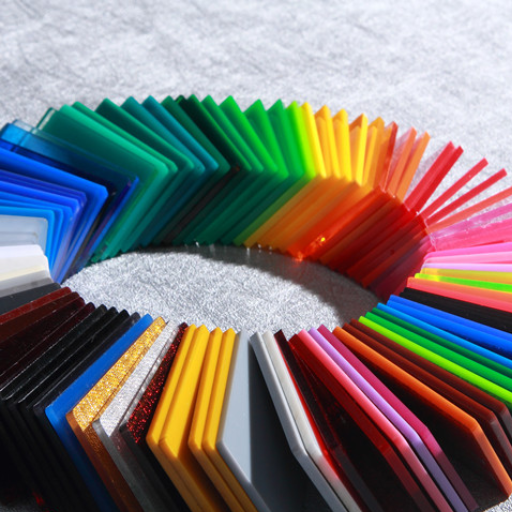ABS, or Acrylonitrile Butadiene Styrene, is a very popular and multi-purpose engineering plastic that is still very favored in manufacturing and product design. Toughness, stiffness, and lightweight abilities all starting from this kind of plastic blend have been one of the most utilized materials within different industrial applications, including even 3D printing and home appliances. However, why is ABS so widespread, and what does it offer in terms of its different capabilities regarding its performance? This post attempts to cover everything necessary about the primary attributes of ABS, encompassing its ingredients, constituents, and the enhancement of its presence in the market, the main limitations, its advantages, and its widespread use. It doesn’t matter if you are a materials engineer by profession, an industrial designer by practice, or a plain layman taking an interest in contemporary materials; this article will explore in depth all the issues regarding ABS and why it is benchmarking in the industry.
Introduction to ABS Material
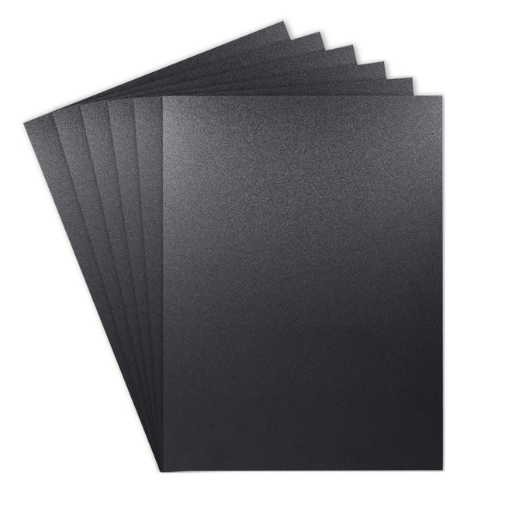
The material known as Acrylonitrile Butadiene Styrene (ABS for short) is a polymer that is efficiently and widely used. This has a very good level because it brings on board three basic monomers – acrylonitrile, butadiene, and styrene – all of them imparting different properties to the material. Acrylonitrile brings on board chemical retention and high temperature stability. Butadiene brings on board structure and resistance to impact. Considered an easy brief thanks to the methods involved in construction and development usage, like styrene, which also gives an excellent finish to the work.
The chemical nature of the material makes it easily processable, lightweight, impact resistant, and heat resistant up to a certain level. All these features curtail the use of ABS in diverse applications in distinct industries like automotive, electronics, and even consumer products. It is also cheap and suitable, e.g., for injection molding and additive manufacturing (3D printing) techniques, further strengthening its place in advanced construction and product design and development.
Definition of ABS Plastic
The uses of acrylonitrile-butadiene-styrene (ABS) plastic can stretch up to its thermoplastic characteristic. It is an amalgamation of three pragmatic monomers — acrylonitrile, butadiene, and styrene, where each renders its own distinctive features to the product. Acrylonitrile gives it chemical toughness and heat resistance, butadiene provides the plastic with strength and impact properties, whereas polystyrene allows assurances of a glossy surface finish. ABS has a melting point between 220°F and 230°F; hence, it is subjected to cases where its heat resistance is required to be mild.
Per these users, the material is used a lot because of its good balance of stiffness, lightweight capability, and affordability. Extending the scope of its utilization, these users also used ABS because it is an electrical insulator. Due to its robustness and ability to be modified to suit the customer’s diverse requirements, ABS finds the majority of its applications in several key areas such as automotive exteriors, protective coverings for electronic gadgets, as well as filaments for 3D printing. It is also noteworthy that ABS is a recyclable material, which is a factor that increases its acceptability in green production.
Composition of Acrylonitrile Butadiene Styrene
Acrylonitrile Butadiene Styrene, or ABS for short, is a polymer of styrene and acrylonitrile, which are polymerized on the background of polybutadiene. The structure of ABS contains three essential monomers, each of which contributes its unique characteristics to the material. The presence of acrylonitrile provides the material with resistance to chemicals and heat and imparts hardness, while the introduction of butadiene doesn’t affect the hardness of the material but rather increases its toughness and impact resistance. Styrene enables easy shaping, while at the same time providing enough strength to the material for many uses.
Properties of ABS Plastic
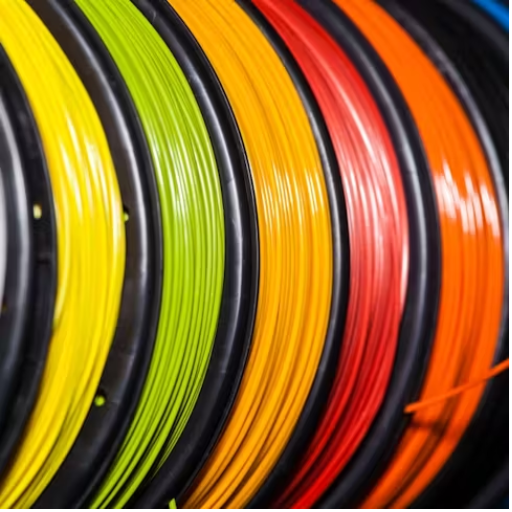
- Mechanical Properties
- Impact Resistance: This plastic called ABS, which is commonly used in high impact applications, is known for its high ability to resist impacts such as denting, cracking and even breaking under acting stress. Range of impact strength is around 200-250 J/m depending on the grade and formulation of the plastic product.
- Tensile Strength: ABS has good tensile strength, with values found to range between 40 and 50 MPa, depending on the types of filler present in the structure from which ABS is formulated.
- Flexural Strength: For this material, higher values are obtained; 70 MPa can be reached for flexural loads as this material withstands these high stresses.
- Thermal Properties
- Heat Resistance: The heat resistance of ABS is quite good. For instance, the heat deflection temperature (HDT) is around 90°С under the maximum load of 1.8 MPa. Some high-performance grades of ABS can achieve HDTs well above 100°C.
- Glass Transition Temperature (Tg): Changes into a leavage phase around 105℃.
- Flammability: Due to standard ASTM materials and tests classifications the flame resistance of ABS is so so and other modification levels to fulfill fire safety requirements specified by UL94 V-0, are available.
- Chemical Properties
- Resistance to Chemicals: The copolymer of acrylonitrile butadiene styrene and styrene, also known as ABS, has a high resistance especially to water-based acids, bases and many oils. However, its structure is degraded by the action of certain strong liquids such as acetone and some hydrocarbons.
- Absorption of Water: The ABS has a very low tendency to uptake moisture, less than 0.3% in 24 hours as per the standard method of testing.
- Electrical Properties
- Dielectric Strength: Acrylonitrile butadiene styrene which is good insulator in nature, has a dielectric strength that is usually between 15 and 30 kv/mm and this, gives it advantages in electronic housing and components.
- Volume Resistivity: The material has a high volume resistivity of approximately 10^16 ohm-cm, ensuring safe usage in electrical applications.
Thermal and Chemical Resistance
ABS illustrates exceptional stability against heat since its typical HDT ranges from 80°C to 100°C, depending on the grade and formulation, at a load of 1.8 MPa. The material can also be used under extreme operational conditions, including temperatures between -20°C and 80°C, owing to the mechanical properties of ABS. Some forms of this polymer, such as High Heat ABS, are used in applications where deformation due to heat is a problem, as they can be modified to further improve the HDT.
Chemically speaking, ABS is resistant to most acids and bases as well as many salt solutions and as such holds its own, when subjected to such aggressive chemicals. In contrast, it breaks down in the presence of strong solvents, esters, ketones, and chlorinated hydrocarbons. Since it is a disadvantage characteristic of ABS, the potential chemical exposures must be addressed in the design of the application. Such a combination of thermal and chemical resistance explains the widespread popularity of ABS material, meaning durable in harsh environments, among most industrial firms.
Comparison of ABS Material Properties with Other Plastics
|
Property/Parameter |
ABS |
Polycarbonate (PC) |
Polyethylene (PE) |
Polystyrene (PS) |
|---|---|---|---|---|
|
Impact Resistance |
High |
Very high |
Moderate to high |
Low |
|
Thermal Stability |
Moderate |
High |
Low to moderate |
Low |
|
Chemical Resistance |
Resistant to mild acids |
High |
Excellent |
Poor |
|
UV Resistance |
Low |
High |
Low |
Low |
|
Strength-to-Weight Ratio |
Moderate |
High |
Moderate |
Low |
|
Cost |
Moderate |
High |
Low |
Very low |
|
Flexibility |
Low |
Moderate |
High |
Very low |
|
Ease of Machining |
Easy |
Moderate |
Difficult |
Easy |
|
Density |
1.04–1.08 g/cm³ |
1.2 g/cm³ |
~0.91 g/cm³ |
~1.04 g/cm³ |
|
Recyclability |
Moderate |
Moderate |
High |
Moderate |
Applications of ABS Plastic

- Automotive Industry
In the automotive industry, ABS is mostly used in making systems such as dashboards, wheel covers, and inner trim components. There is impact strength and surface finish, which facilitates its use not only in functional components but also in decorative ones. In fact, industry-wise, ABS is measured to comprise about 15-20% of all thermoplastics being used for automobiles across the world.
- Consumer Electronics
ABS is also used in the electronics industry because of its good molding properties and electrical insulation. Common uses include making casings for televisions, computers, gaming devices, and mobile phones. For example, ABS is typically used to form laptop frames because its lightweight and toughness meet.
- Appliances
ABSing is plastics used in updating home appliances for e.g vacuum cleaners, kitchen appliances and liners of refrigerators. It is cheap and hefty hence convenient to use appliances that are subject to continuous services.
- Construction Materials
ABS takes place in another industry i.e. construction in the process of fabricating piping components and wall sockets. It performs well in areas where temperatures fluctuate, and mechanical stress is potential.
- 3D Printing
Due to enhancements of technology in 3D printing, ABS material has been favored more than many filament plastics. Being mechanically strong enough, it can be printed and returned into their natural state without warping hence enhancing their printing and production abilities.
- Toys and Recreational Products
The design of plastic toys in particular makes use of a significant amount of ABS as the material can withstand the heat and enables complex forms. One extreme example of this would be the LEGO brick, which illustrates carefully the dimensions and strength of the plastic.
Uses of ABS in the Automotive Industry
- Interior Components
The automotive interior space especially uses ABS for the manufacture of dashboards, door panels and trims parts among many others. Its versatile usage enables it to form complex structures while remaining cost friendly and it will ensure over a time such components do not only decline in their appeal but also their purpose.
- Exterior Applications
A lot of grills, wing mirrors and wheel caps which are simply exterior automotive products are made out of ABS. It is capable of withstanding impacts and the constant change in the weather condition.
- Seat Components
It is also used to make things such as the bottom part of the seat, the part where the seat belt goes and parts that help in adjusting the size of the seat.
- Lighting Systems
Plastic reflectors and housing of lights in automobiles such as headlamps and tail light are normally made from ABS. It is a true choice for these types of parts as it possesses high heat resistance and can be easily coated with metal.
- HVAC Components
ABS Plastic in Electronics and Household Items
- Electronic Housings
If you were asked to mention one or two of the high-performance materials in different gadgets and gizmos, chances are, you would mention Acrylonitrile-butadiene-styrene (ABS). This is because the plastics possess electrical insulation properties and also have the ability to suppress fire which is an adverse environmental element. For example, records that can be accessed on the internet show that in small electronic housing, the blends of acrylonitrile butadiene styrene commercially constitute about 40% of the total weight of components.
- Keyboards and Computer Peripherals
Acrylonitrile-butadiene-styrene is often used in electronic pens, telephone buttons, and other parts having a combination of impact resistance and wear resistance since it is wear resistant. Its environmental properties is also good because its spacial structures do not change under a voltage therefore the product renders performance consistently.
- Appliance Components
Common housewares such as vacuum cleaners, microwave ovens, even doors, and refrigerators, refrigerator liners all additionally include an ABS specialty construction for better durability or thermal properties enhancement. Concrete143 is also used to refer to ice in such machines since it helps these, for instance, vacuum cleaners or microwave doors, withstand mechanical fatigue as well as thermal expansion in temperatures up to 105 degrees centigrade.
- Power Tool Casings
ABS also has strength and the ability to absorb shock effectively, and it is employed for manufacturing jacket insulation or covering of screwdrivers, saws, and other manual instruments. Moreover, it is lightweight which also has a bearing on the factors of product design and use.
- Toys and Recreational Items
Among many other things in the household, more and more such complex materials are being used, such as ABS in the LEGO tiles. No deterioration under any loads, molded walls – pattern making and high-gloss cells are the waiting for the task/master! There is disseminated information in the condition that over 60 billion LEGO bricks, which are produced every year mostly consist of the ABS polymer.
Advantages and Disadvantages of ABS Plastic
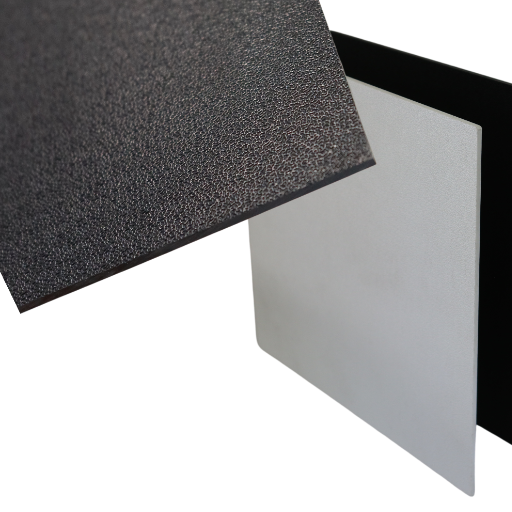
Advantages of ABS Plastic:
- High Impact Resistance: ABS plastics are notorious for their toughness and their ability to deal with physical stress, which makes them great for any product which requires endurance and is used for a long time.
- Ease of Manufacturing: Absolutely no problem with molding allows to obtain the shape exactly as required, even with intricate parts, and, in addition, promotes mass production viewpoints.
- Lightweight Composition – Its dynamic structure makes these products weigh less while increasing their durability which further promotes their mobility and transport.
- Chemical Immunity – There are some numerous oils, animal oils and fats and plasticizers present in the environment, owing to which the ester group wrinks the chains and complicates the solvent bonding.
- Aesthetic Appeal – The material smoothness aids in easy application of the colours in the products, and the restyling tools for a faux leather finish are available almost in every shade lax – in a range from soft to matt.
Disadvantages of ABS Plastic:
- Low UV Resistance – High ageing and destruction of ABS with prolonged exposure to direct solar radiation, there may be discolouration and embrittlement occurring over time.
- Limited Temperature Range – Even though they show some resistance to heat, they will melt when the temperature is increased to higher than 105℃, limiting use to those applications which do not require very high temperature.
- Non-Biodegradable – Since it is made out of plastic like most of other things in this world, ABS is unfortunately in ping some non-degradable waste, especially when no proper disposal method is being employed.
- Susceptible to Solvents – Certain organic solvents turn out to be harmful to the ABS, restricting its application in some chemical processes.
- Environmental Impact of Production – The production process of ABS involves the use of petrochemical raw materials, which may lead to greenhouse gas generation and depletion of natural resources.
Key Advantages of Using ABS
- Tough, impact-resistant material – ABS is known to exhibit a fantastic high impact resistance capacity as well as toughness which makes it an ideal material for durable applications such as automotive parts, consumer electronics, and safety equipment.
- Temperature resistance – The most standard operations with ABS are found at temperatures between -20°C and 80°C (-4°F and 176°F), so ABS can withstand certain temperature changes without wear and tear of the product.
- Easy manufacture – ABS is also a very versatile material that is not only easily moulded and extruded but also can be made using different techniques and at low cost if bulky items are to be manufactured.
- Lightweight yet strong material – It may not be obvious that this is a durable material once it is mentioned that it is made of ABS, but thanks to its lightweight property, this material contributes in terms of power saving and a reduction in raw materials in fields such as transport and buildings.
- Adaptability – The addition of any additives and coatings as required is such that ABS can be given any color or superficial finish, and can also have functional properties made inclusions such as UV resistant and rigid resistant properties.
- Cost-Effective Solution – ABS has the perfect implementation of the quality – mechanical strength, processability, and cost; so it is favored for many great industries with their designs without surpassing the budget.
Limitations and Disadvantages of ABS Material
- Poor heat resistance – One of the disadvantages of ABS is that it does not perform very well in high temperatures. Over 105°C (221°F), the material tends to give way when heated, hence there is a reduction in its use in substances needing heat resistance.
- Ecology – As a non-biodegradable plastic, ABS is a petroleum product. There are promoting procedures that can enhance recycling of these plastics. However, disposal mechanisms will including burning plastics precipitate envirchemical pollution which is a worrying factor for the green industries.
- Chemical deterioration- This is the one resin that is known to be compatible with a variety of solvents and adhesives while showing little or no resistance to acids and bases. Protracted exposure to these will lessen the resin’s strength leading to the development of cracks or warping causing the resin to expire prematurely in environments where there are a lot of successive chemical treatments.
- Risks of Ignition – Primarily used in plastics manufacturing processes such as ABS is combustible, unlike some bioplastics where this is an issue. There are certified flame retardant ABS materials, but buyers should note their enhanced price and sometimes adverse affects on certain material properties.
- Radiation Skin Damage – ABS when in the open, continuous exposure of ABS to UV light results in yellowed, degraded, and generally brittle material that cannot be confidently used in areas where UV degradation could be a concern, unless a UV stabilizer is added
- Poor Sun and Rain Protection – It is very obvious that ABS is highly weather and climate-dependent. The material exhibits poor resistance to moderate humidity, extreme humidity, and changes in temperature. As such, the durable readability of items made of ABS is not guaranteed in such harsh conditions and in variable conditions.
Environmental Impact of ABS Plastic
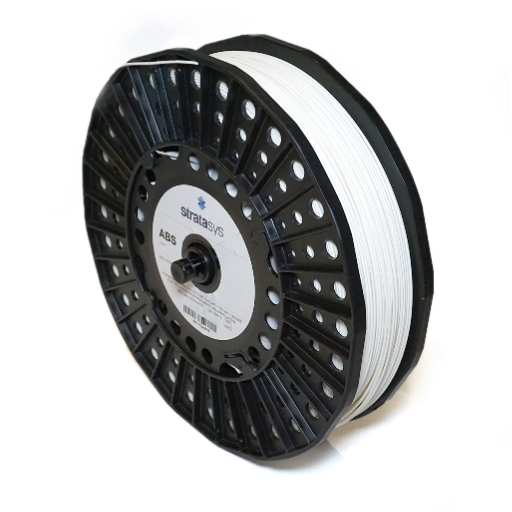
But non-biodegradable plastics merge the troublesome plastic into the environment. It is petroleum-based and thus generates a significant volume of greenhouse gases, which do not aid in the depletion of finite, fossil fuel reserves. It is also important that with durable goods, ABS, when disposed of, will not decompose in the landfill, thus the possibility of the waste clog getting long-lasting is high in the absence of proper recycling. Nevertheless, it can be used as an example of the fact that while ABS can be recycled, this method is extremely energy-intensive – for this reason, it is not as common as in the case of many other materials. These factors draw attention to the need to reduce, learn to recycle, and dispose of ABS in such a manner that minimal damage is caused to the environment.
Recyclability of ABS Material
Processing of recycled plastic ABS (Acrylonitrile Butadiene Styrene) material provides various advantages but has a couple of limitations. These limits are mainly due to its complex chemical structure and the enormous energy consumption during the process. ABS is one of the common thermoplastics which is made by linking acrylonitrile, butadiene, and styrene in such a way that each of the monomers gives a certain property to the structure, like additional toughness, impact, and resistance. This structure is also a drawback of the material, even in terms of recycling, as the products involve exothermic reactions, and this means dealing with different components requires specialists and high temperatures.
In addition, the impurities of the ABS waste (dust, moisture, the presence of other plastic types, etc) considerably lower the quality and the effectiveness of recycling. As has been found in surveys, the rates of recycling post-consumer ABS are still on the bottom compared to easier-to-recycle plastics like PET or HDPE. The process of recycling even requires a considerable amount of energy for the melting and reforming steps, possibly nullifying the positive effects of recovering the material.
Sustainable Alternatives to ABS Plastic
Plaster is a section within ABS professional wherein there exist numerous retries although that mostly applies to industries which are oriented towards eco-friendly solutions. Particularly, industries promote such measures as Polylactic acid, which is a biodegradable thermoplastic that is obtained from renewable resources like corn or sugarcane. At the moment, PLA is very fashionable because it has the same mechanical value as ABS, especially in terms of strength and rigidity, while also having the advantage of its industrial composting.
Reference Sources
-
Mechanical Behavior of ABS in Fused Deposition Modeling (FDM): This study analyzed the mechanical properties of ABS parts fabricated using FDM. It found that build parameters like raster orientation and air gap significantly influence tensile strength and stiffness.
-
Characterization of ABS Material: A Review: This review explored various properties of ABS, including its thermal decomposition, metallization, and mechanical behavior. It highlighted environmentally friendly techniques like nickel electroplating and atmospheric plasma treatment to enhance ABS properties.
-
Material Characterization of FDM ABS by Designed Experiments: The study focused on the anisotropic properties of ABS parts produced via FDM. It found that tensile strength of FDM parts ranged between 65% and 72% of injection-molded ABS. Shear strength between layers was higher than between roads.
Frequently Asked Questions (FAQs)
Q: What are the advantages of ABS plastic parts?
A: ABS plastic is a popular thermoplastic polymer known for its durability and impact resistance. One of the primary advantages of ABS is its ability to withstand extreme temperatures, making it suitable for applications that require both strength and flexibility. Additionally, ABS plastic has a low coefficient of thermal expansion, which helps maintain its shape under varying temperature conditions. It is also easy to mold and extrude, allowing manufacturers to create complex plastic parts with tight tolerances. The versatility of ABS makes it ideal for products ranging from computer keyboards to enclosures for electronic devices.
Q: What are the uses of ABS plastic in machine components?
A: ABS plastic is commonly used in various machine components due to its robust properties and ease of fabrication. It is particularly favored in applications that require durable and lightweight plastic parts, such as housings and enclosures for machinery. The material’s excellent impact resistance makes it suitable for components that undergo frequent handling or mechanical stress. Moreover, ABS is often used in plastic extrusion processes, allowing for the creation of intricate shapes and designs. Machine parts made from ABS plastic can be found in everyday items like recorders and plastic clarinets, showcasing its versatility and reliability.
Q: How does the composition of ABS affect its plastic properties?
A: ABS plastic is made by polymerizing styrene and acrylonitrile in the presence of butadiene, resulting in a material that combines the desirable properties of all three components. The unique composition of ABS provides heat resistance and toughness, making it suitable for a wide range of applications. The presence of acrylonitrile enhances the material’s chemical resistance, while butadiene contributes to its impact strength. Additionally, the final properties of ABS can vary based on the specific grades used, allowing manufacturers to select the best option for their needs. This adaptability makes ABS a valuable choice in industries requiring high-performance plastic products.
Q: What are the different ABS grades available for plastic items?
A: ABS is available in several grades, each tailored for specific applications and performance requirements. These ABS grades can vary in terms of impact strength, heat resistance, and surface finish. For example, heat-resistant ABS is designed for applications that involve exposure to higher temperatures, while other grades may focus on providing superior impact resistance. Understanding the different ABS grades is essential for manufacturers to choose the appropriate material for their plastic items. The availability of various ABS grades allows for customization, ensuring that products meet the desired properties for their intended use.






